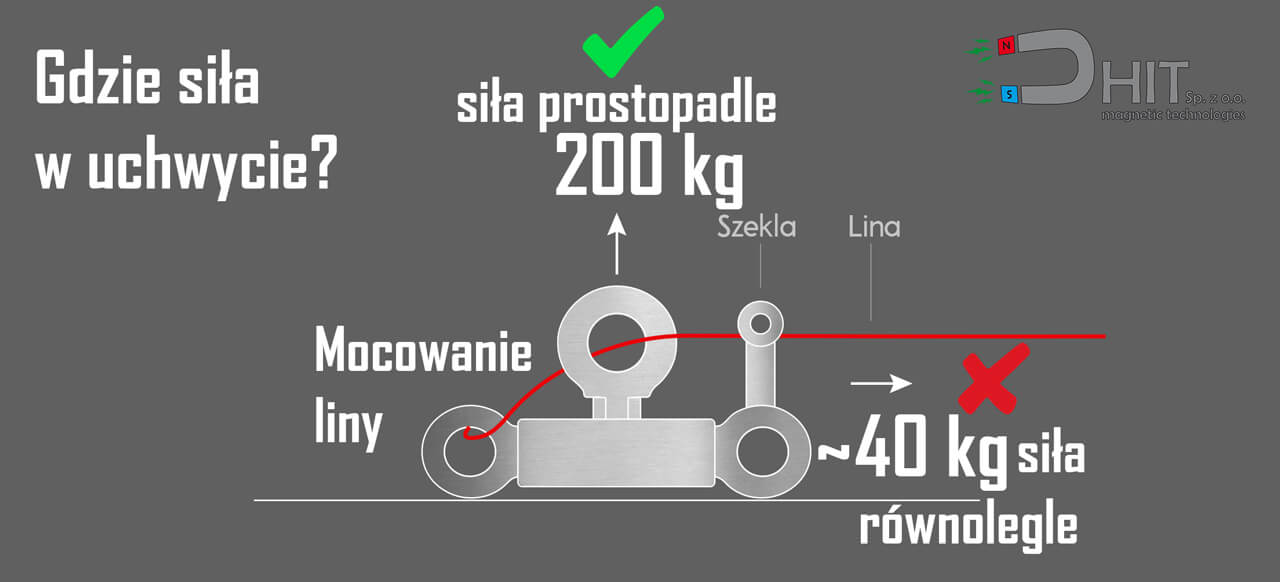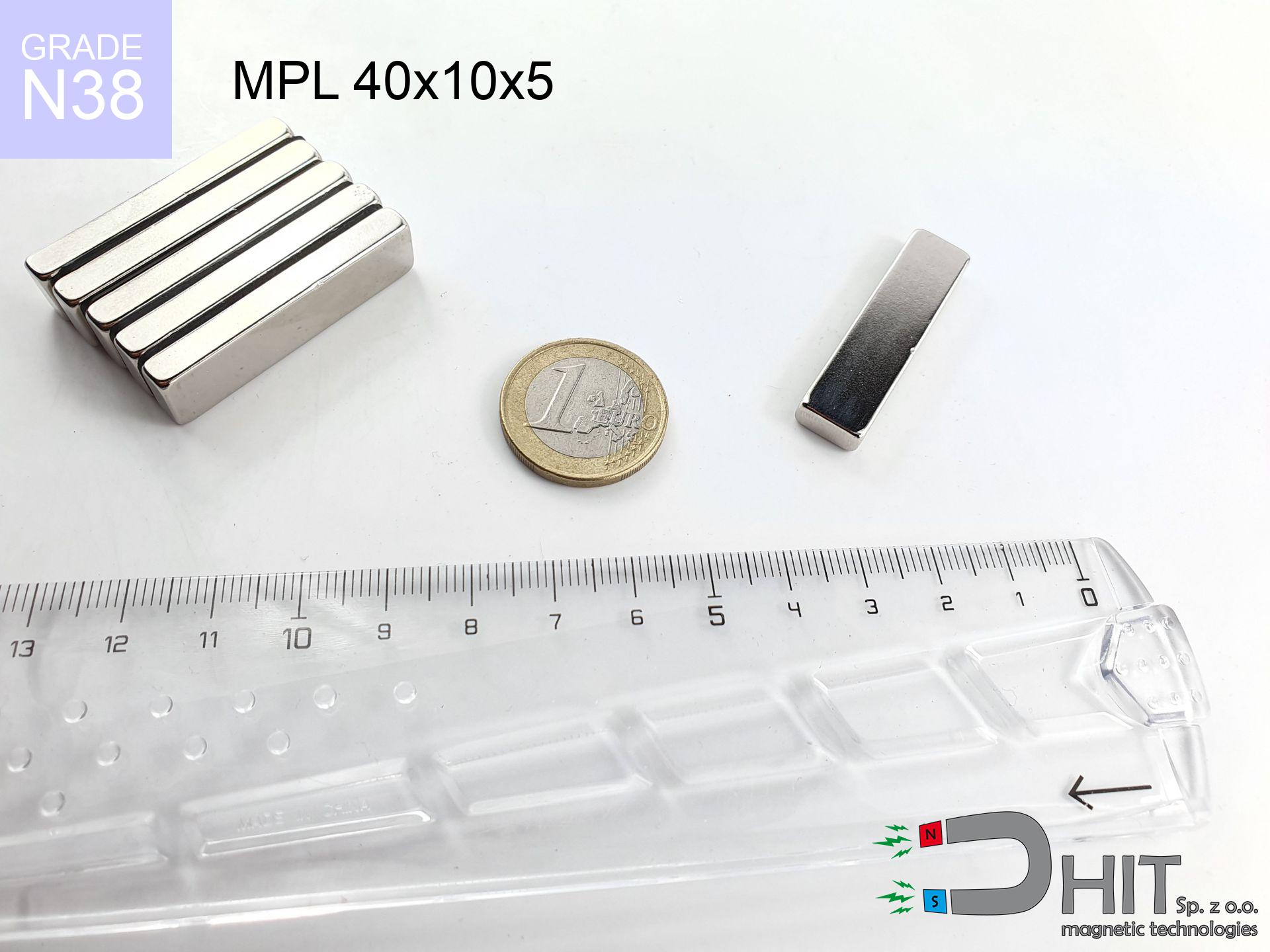UMP 75x25 [M10x3] GW F200 GOLD / N42 - search holder
search holder
Catalog no 210421
GTIN: 5906301814061
Diameter Ø [±0,1 mm]
75 mm
Height [±0,1 mm]
25 mm
Weight
900 g
Load capacity
310 kg / 3040.06 N
Coating
[NiCuNi] nickel
150.00 ZŁ with VAT / pcs + price for transport
121.95 ZŁ net + 23% VAT / pcs
bulk discounts:
Need more?Want to negotiate the price?
Call us +48 22 499 98 98 or write via form on the contact page. Test the magnet's power with our power calculator.
Orders placed by 14:00 are shipped the same day.
UMP 75x25 [M10x3] GW F200 GOLD / N42 - search holder
Magnetic properties of material N42
Physical properties of NdFeB
Shopping tips

Advantages and disadvantages of neodymium magnets NdFeB.
Apart from immense strength, neodymium magnets have the following advantages:
- They do not lose power over time - after 10 years, their power decreases by only ~1% (theoretically),
- They are highly resistant to demagnetization by external magnetic sources,
- In other words, thanks to the shiny nickel, gold, or silver finish, the element gains an aesthetic appearance,
- They have very high magnetic induction on the surface of the magnet,
- Thanks to their high temperature resistance, they can operate (depending on the shape) even at temperatures up to 230°C and above...
- The ability for precise shaping and customization to specific needs – neodymium magnets can be produced in various forms and dimensions, which amplifies their universality in usage.
- Significant importance in advanced technologically fields – are used in computer drives, electric motors, medical apparatus or other highly developed apparatuses.
Disadvantages of neodymium magnets:
- They can break when subjected to a powerful impact. If the magnets are exposed to impacts, we recommend using magnets in a protective case. The steel housing in the form of a holder protects the magnet from impacts and at the same time increases its overall strength,
- They lose power at high temperatures. Most neodymium magnets experience permanent loss of strength when heated above 80°C (depending on the shape and height). However, we also offer special magnets with high temperature resistance, up to 230°C,
- Due to their susceptibility to corrosion in a humid environment, we suggest using waterproof magnets made of rubber, plastic, or other moisture-resistant materials when using them outdoors,
- The use of a cover or a magnetic holder is recommended due to the limited possibilities of manufacturing threads or complex shapes in the magnet
- Potential hazard to health from tiny fragments of magnets are risky, if swallowed, which becomes significant in the context of child safety. It's also worth noting that small elements of these products can hinder the diagnostic process after entering the body.
Precautions
Neodymium magnets are not recommended for people with pacemakers.
Neodymium magnets generate strong magnetic fields. As a result, they interfere with the operation of a pacemaker. This is because many of these devices are equipped with a function that deactivates the device in a magnetic field.
Neodymium magnetic are extremely fragile, resulting in breaking.
In the event of a collision between two neodymium magnets, it can result in them getting chipped. They are coated with a shiny nickel plating similar to steel, but they are not as hard. In the case of a collision between two magnets, there can be a scattering of small sharp metal fragments in different directions. Protecting your eyes is essential.
Neodymium magnets are primarily characterized by their significant internal force. They attract to each other, and any object that comes in their way will be affected.
Magnets may crack or alternatively crumble with careless joining to each other. You can't move them to each other. At a distance less than 10 cm you should have them extremely strongly.
Neodymium magnets can become demagnetized at high temperatures.
Even though magnets have been observed to maintain their efficacy up to temperatures of 80°C or 175°F, it's essential to consider that this threshold may fluctuate depending on the magnet's type, configuration, and intended usage.
Neodymium magnets are among the strongest magnets on Earth. The astonishing force they generate between each other can surprise you.
Familiarize yourself with our information to properly handle these magnets and avoid significant swellings to your body and prevent disruption to the magnets.
Keep neodymium magnets away from the wallet, computer, and TV.
The strong magnetic field generated by neodymium magnets can destroy magnetic media such as floppy disks, video tapes, HDDs, credit cards, magnetic ID cards, cassette tapes, or other devices. They can also damage devices like video players, televisions, CRT computer monitors. Do not forget to keep neodymium magnets at a safe distance from these electronic devices.
Dust and powder from neodymium magnets are flammable.
Do not attempt to drill into neodymium magnets. Mechanical processing is also not recommended. Once crushed into fine powder or dust, this material becomes highly flammable.
The magnet is coated with nickel. Therefore, exercise caution if you have an allergy.
Studies show a small percentage of people have allergies to certain metals, including nickel. An allergic reaction often manifests as skin redness and rash. If you have a nickel allergy, you can try wearing gloves or simply avoid direct contact with nickel-plated neodymium magnets.
Never bring neodymium magnets close to a phone and GPS.
Magnetic fields can interfere with compasses and magnetometers used in aviation and maritime navigation, as well as internal compasses of smartphones and GPS devices. There are neodymium magnets in every smartphone, for example, in the microphone and speakers.
It is important to keep neodymium magnets out of reach from youngest children.
Remember that neodymium magnets are not toys. Be cautious and make sure no child plays with them. They can be a significant choking hazard. If multiple magnets are swallowed, they can attract to each other through the intestinal walls, causing significant injuries, and even death.
Warning!
Please see the article - What danger lies in neodymium magnets? You will learn how to handle them properly.

![magnets for fishing in water UMP 75x25 [M10x3] GW F200 GOLD / N42 magnets for fishing in water UMP 75x25 [M10x3] GW F200 GOLD / N42](https://cdn3.dhit.pl/graphics/banners/magnet.webp)
![UMP 75x25 [M10x3] GW F200 GOLD / N42 - search holder](https://cdn3.dhit.pl/graphics/products/ump-75x25-m10x3-gw-f200-gold-pag.jpg)
![UMP 75x25 [M10x3] GW F200 GOLD / N42 - search holder](https://cdn3.dhit.pl/graphics/products/ump-75x25-m10x3-gw-f200-gold-voj.jpg)
![SM 18x125 [2xM5] / N42 - magnetic separator SM 18x125 [2xM5] / N42 - magnetic separator](https://cdn3.dhit.pl/graphics/products/sm-18x125-2xm5-cij.jpg)
![BM 380x180x70 [4x M8] - magnetic beam BM 380x180x70 [4x M8] - magnetic beam](https://cdn3.dhit.pl/graphics/products/bm-380x180x70-4x-m8-wex.jpg)



